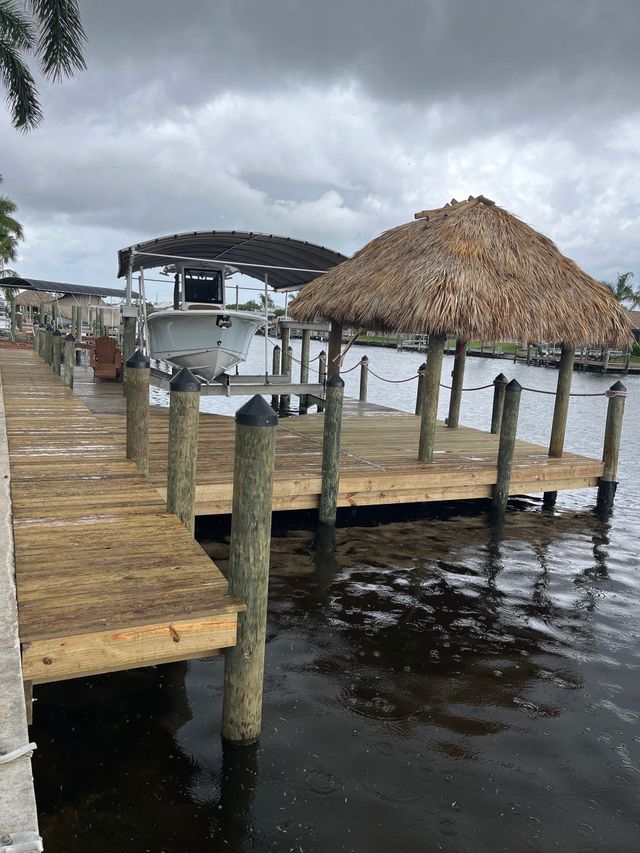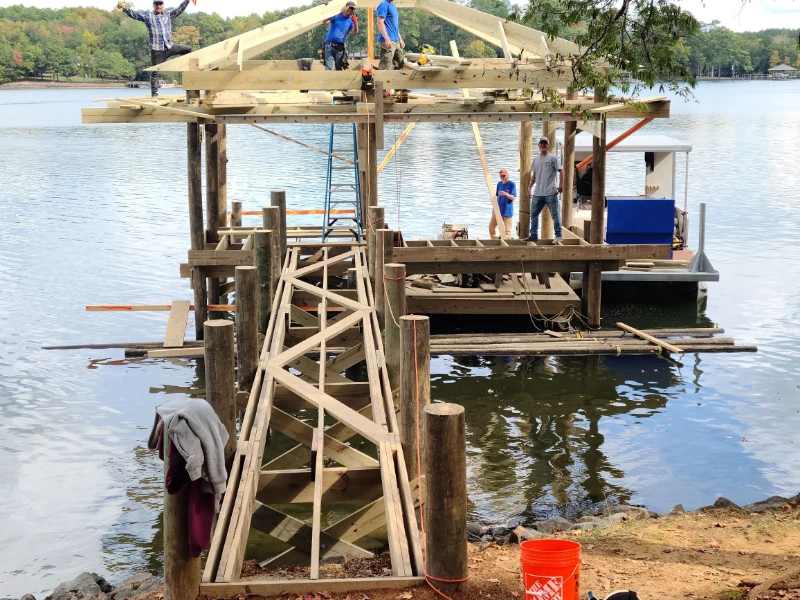How to Pick the Right Service for Your Dock Repairs
Wiki Article
Efficient Dock Fixing Techniques: Making Sure Architectural Integrity
Making certain the architectural honesty of docks through effective repair work techniques is extremely important for the longevity and safety and security of marine centers. This includes a multi-faceted approach beginning with comprehensive inspections utilizing advanced innovations like finder devices and remotely operated automobiles (ROVs) to detect both visible and hid damages. Consequently, selecting the best repair products, such as composite materials and corrosion-resistant alloys, is critical for sturdiness. Architectural support methods, consisting of the application of cross-bracing systems and load-distribution plates, play an important role in mitigating tension points. Nevertheless, the value of these strategies comes to be evident when checking out advanced fixing techniques and preventative maintenance techniques.Assessing Dock Damages
Assessing dock damages is a crucial very first step in ensuring the architectural stability and safety of any type of docking facility. This first analysis includes a detailed inspection to identify both concealed and visible damages. Secret aspects to check out include the dock's foundation, pilings, outdoor decking, and equipment. Each component should be inspected for signs of wear, rot, corrosion, or other types of degradation that can compromise the architectural honesty.Architectural engineers or certified examiners normally perform these evaluations making use of specialized techniques and devices. For example, undersea evaluations could employ sonar tools or from another location ran vehicles (ROVs) to find immersed damage. Over water, aesthetic inspections are matched by utilizing dampness meters and various other diagnostic devices to discover underlying problems not instantly visible to the naked eye.

Choosing Repair Work Products
Picking the suitable repair products is an essential action in the dock restoration process, one that directly affects the longevity and performance of the repaired structure. Material selection should be driven by elements such as environmental conditions, load-bearing demands, and compatibility with existing dock elements. For circumstances, timber is a typical selection for anchors because of its all-natural resilience and aesthetic charm. Nonetheless, picking the ideal sort of timber, such as pressure-treated lumber or normally rot-resistant varieties like cedar or teak wood, is critical to hold up against marine atmospheres.Along with timber, composite materials are increasingly prominent due to their resilience and reduced maintenance requirements. Compounds, normally made from a blend of plastic and timber fibers, offer superb resistance to rot, insects, and UV damage. For metal docks, picking corrosion-resistant alloys such as galvanized steel or marine-grade aluminum is vital to protect against rust and make certain structural honesty in saline water problems.
Epoxy resins and marine-grade sealers are indispensable for repairing fractures and securing joints, providing a water resistant obstacle and enhancing the dock's general toughness. By meticulously choosing top notch products, dock repairs can accomplish resilient outcomes, therefore safeguarding against future deterioration and making sure secure, reliable use.
Structural Reinforcement Methods
Efficient architectural support methods are crucial in making sure the security and long life of dock fixings. One basic approach entails making use of steel or composite support bars (rebar) within concrete frameworks. Rebar gives added tensile strength, preventing cracks and dispersing loads more evenly. This method is specifically effective for anchors subjected to hefty tons or rough environmental problems.One more necessary method is the application of fiber-reinforced polymers (FRP) These products offer high strength-to-weight proportions and outstanding resistance to rust, making them perfect for try this web-site strengthening concrete or wood anchors. FRP can be applied in strips or sheets and bound with epoxy resins to boost structural stability.
Supporting and securing systems also play a crucial function in architectural reinforcement. Cross-bracing, using steel or wood light beams, can counteract lateral forces, lowering guiding and movement. Anchoring systems, such as helical piers or driven piles, provide a secure foundation by transferring tons to much deeper, more secure soil layers.
Finally, the combination of load-distribution plates can help distribute weight much more evenly across the dock's surface area, minimizing local tension factors. These methods collectively make sure that docks stay durable and safe, efficient in holding up against the roughness of their operational environment.
Advanced Repair Work Approaches

Another sophisticated method includes underwater welding, which permits for repairs to be performed without the need to dewater the location. This method is especially helpful for dealing with architectural concerns in immersed dock parts, guaranteeing minimal interruption to operations. Improved welding strategies, combined with robot systems, supply precision and reliability, therefore prolonging the life-span of the dock.
Additionally, cathodic defense systems are applied to avoid corrosion in metallic dock frameworks. By utilizing sacrificial anodes or impressed current systems, these techniques effectively mitigate the electrochemical processes that result in material wear and tear.
Lastly, progressed monitoring technologies, such as structural health surveillance (SHM) systems, give real-time information on the condition of dock structures. These systems make it possible for proactive maintenance and timely interventions, inevitably ensuring the long-term architectural stability of the dock.
Upkeep and Avoidance
Maintenance and avoidance are fundamental concepts that underpin the long life and safety and security of dock frameworks. Regular assessments are vital, permitting early discovery of wear and tear, prospective weak points, and ecological effects. A proactive strategy, entailing routine look for rust, rot, and architectural changes, reduces expensive fixings and extends the dock's operational life.Precautionary steps ought to consist of applying safety finishes to metal components to safeguard against corrosion and utilizing cured wood to resist degeneration. In addition, making sure proper water drainage and air flow can protect against water accumulation, which is a typical reason of architectural deterioration. Including high quality materials and adhering to manufacturer guidelines throughout building and construction and fixing stages additionally play essential roles in improving durability.

Training employees in dock maintenance ideal methods guarantees constant application of safety nets. Leveraging technological developments, such as drones for inspections and sensors for real-time tracking, can even more enhance maintenance initiatives. By focusing on upkeep and avoidance, dock owners can make sure architectural integrity, operational safety and security, and affordable monitoring over the dock's lifespan.
Verdict
Finally, maintaining the structural integrity of marine facilities requires thorough dock repair service methods. Comprehensive evaluations making use of advanced devices discover both noticeable and hid problems, while the option of appropriate repair service materials boosts longevity. Carrying out architectural support techniques addresses stress and anxiety points successfully. Advanced repair work strategies, combined with normal upkeep methods, ensure the dock remains operational and safe under diverse ecological problems. Embracing these approaches significantly prolongs the life-span and functionality of marine infrastructure.Ensuring the architectural honesty of docks via reliable repair service techniques is extremely important for the longevity and safety of aquatic centers.Selecting the appropriate repair materials is a pivotal action in the dock repair process, one that directly affects the longevity and efficiency of the repaired framework.Effective architectural support strategies are important in making certain the stability and longevity of dock repair services. By prioritizing upkeep and avoidance, dock owners can make sure architectural integrity, functional safety and security, and affordable administration over the dock's lifespan.
In verdict, keeping the structural integrity of aquatic centers demands extensive dock fixing methods.
Report this wiki page